SPECIAL TO OURLADS BLOG by Matt Waldman
The following blog is a reprint by permission of the first in a series of five articles by Matt Waldman that was posted on his blog: http://mattwaldmanrsp.com/
Theory and practice, the ivory tower and the battleground. People will tell you that one is more beneficial than the other. I believe there’s not only a place for both, but they complement each other.
I think NFL Films senior producer Greg Cosell is one of the preeminent theorists of player evaluation. I call him a football theorist because he’s never played, coached, or scouted the game in an organization. Yet, this lack of practical experience doesn’t detract from his insights.
In many cases, it allows Cosell to step back and ask questions that NFL teams and personnel would like to think about. Chad Reuter is a similar kind of theorist. In fact he’s done research for NFL teams that lack the time or the knowledge to explore on their own. Thinkers have an important place in the world even if they purposely are doing work in quiet rooms away from the realities of the environments they study.
If Cosell and Reuter are football theorists, then I think it’s accurate to describe Ourlads’ Dan Shonka as one of the ultimate practitioners of football evaluation. Shonka has 39 years of football experience as a player, college recruiter, college coach, and a combined 16 years as a NFL scout for National Football Scouting Service, the Philadelphia Eagles, the Washington Redskins, and the Kansas City Chiefs.
Last week Shonka agreed to speak with me about scouting, players, and the NFL. Our scheduled 60 minutes turned into two hours of football talk that flew by. Dan was afraid I got more than I bargained for, but I told him that I got exactly what I wanted – just more than I could have expected. Whereas Cosell often questions the NFL evaluation system (something I do frequently as a theorist and not a practitioner), Shonka’s war stories reflect how a someone actually deals with the way “things are,” and not how they “should be.”
This segment of our conversation included stories about Kurt Warner, Peyton Manning, Tom Brady, and the players and systems of Brigham Young and Cal. These stories are terrific, but for me the most valuable nuggets I gleaned from Shonka’s tales is the importance (and real life examples) of confidence and competitiveness in a football player.
Waldman: Former scouts that I’ve had conversations with say that scouting reports are designed to give a quick hitting overview of a player, because there are so many players to review and such little time. Can you give me a basic description of what your reports at the National Football Scouting Service were like?
Shonka: If you go to our website you’ll find Kurt Warner’s report, that’s the actual report form that we use. There’s a story behind that report, too. I know I was the only scout to write about Kurt Warner.
Waldman: How do you know?
Shonka: The reason I know that is because I tried to get quarterbacks to the combine to throw. They always get three [quarterbacks] every year to throw to the backs and tight ends during the week. They do different drills along with the other quarterbacks that come in that are the higher-graded players.
Those higher-graded players don’t want to burn their arms up, but these other quarterbacks you bring in to do all of this throwing. It is also designed so you can get other teams to look at them.
So I called (National Football Scouting director) Duke Babb up and told him that I had two quarterbacks in my area that I would like to bring into the Combine to throw so teams could look at them. I told him that one of my quarterbacks only played his senior year and he’s a good quarterback who I gave a 5.0 grade, which is a “make it,” grade.
Babb told me he’d call the independents – at the time there were six teams, two of them were Oakland and San Francisco – and B.L.E.S.T.O. and see what grades they have on this guy. Well, B.L.E.S.T.O. didn’t write him up and the independents didn’t either, so we couldn’t bring him in. That quarterback was Kurt Warner.
Waldman: Who was the other guy?
Shonka: The other guy they all wrote up as a prospect. So we brought him in – Paul Burmeister of NFL Network – he was the other quarterback that I recommended and the other groups had graded him.
I don’t think it shows up on my report on Kurt Warner, but the reason I got a copy of my report was Packers GM Ron Wolf. I couldn’t even get my report from National after Warner made it for the first time with the Rams. I called National to get a copy of my report and they told me it was down in a vault in Tulsa on reel of microfiche.
So I called Ron Wolf and asked for a copy of my National report. He told me yes and got it out of his file cabinet. He told me that they didn’t even write a report on Warner. They signed him off my report. They signed him as a free agent. That’s why I know that no one else did a report on Warner except for me.
Waldman: Great story….
Shonka: Well you know Matt, I tried to get Warner into Philadelphia in ’97 – or maybe it was ’98 – and there was an office guy in Green Bay that Philadelphia hired as an office guy. When I pitched Warner he said, “Warner wouldn’t even go on the field and take snaps in Green Bay. He can’t play.”
I told him the kid could play and the reason he didn’t go on the field was because he didn’t know the offense. It wasn’t because he didn’t have the talent. Long story short, they didn’t bring him into Philadelphia but it all kind of worked out for him, didn’t it?
Waldman: Yeah, I’d say that first year was pretty magical in St. Louis.
Shonka: Ironically enough, I was at the Rams-Chargers preseason game scouting the both teams’ personnel when Rodney Harrison hurt Trent Green’s knee.
Trent Green was another player I wrote up from my area for National. He went to Indiana. Bobby Beathard called me about Trent and drafted him out of Indiana. Trent’s parents are from Cedar Rapids where I live. Although Trent never really lived here, he was from Saint Louis…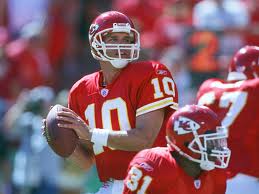
Waldman: What did Beathard ask you about Green?
Shonka: He told me that they really liked him, but every time Indiana played Iowa he didn’t have a good game. I said, “Bobby, he was pressing too hard. He’s from Cedar Rapids, which is 30 miles from Iowa City and he had a lot of relatives there and Iowa didn’t recruit him. He was trying too hard so he didn’t look great. But he’s a very good quarterback.” I gave him a 6th or 7th round grade and I think they drafted him in the 6th round (check).
Waldman: What were some of the important lessons about player evaluation that you learned while working at National and with the various NFL teams?
Shonka: As much as I used to fight it, a guy definitely has to have measurables. There are rarities, but you’ve got to be able to have the measurables for a position. You just don’t play offensive tackle at 6’1”, 285 lbs. no matter how good you’re feet are because you have to have those long arms to handle those pass rushers.
But maybe above all – and it’s hard to determine this unless you really, really study guys – is a player’s confidence in his own ability. I don’t mean false confidence. I was with three different NFL teams and a lot of good major college teams and a lot of these guys are like little kids [in the way that] they question their confidence.
I don’t think the great players ever really question their confidence and their competitiveness. Those are the two big things: confidence and competitiveness.
Waldman: Any examples of how you’ve spotted this about a players as a scout in addition to watching film?
Shonka: When I went up to Tom Brady’s workout – he was in my area – I gave him a fourth-round grade. When I talked to Lloyd Carr I asked him, “Am I missing something coach? I like this guy and it doesn’t seem like there aren’t a lot of guys who like him the way that I do.”.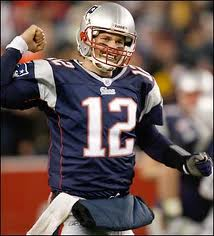
Not that it made any difference to me, I used to like guys and stand by it without caring what other people thought. But I wanted to know if there was something I was missing and was just doing my due diligence.
Carr said, “Listen Dan, there is one thing that Tom Brady has that people can’t see. He’s the most competitive guy that I have ever been around.” He then told me the story about the time they recruited Drew Henson – a great athlete and highly recruited in football and baseball – and they put Henson ahead of Brady on the first team. Carr told me that he never saw Tom more pissed off than when he came into my office and wanted to know what was going on.
Brady told Carr, “Listen, Henson didn’t beat me out and you put this guy ahead of me. I’m the better quarterback and I was never beat out and I want to know what’s going on?!”
Lloyd said that was the most pissed off and upset he had ever seen Tom. He said Tom was always super-competitive, but people could never pick up on that. And you know, he was a gangly guy. He didn’t run great, but he threw the ball pretty well. He didn’t have the big gun, but he had great anticipation.
When you think of these really good quarterbacks – take Warner, who had a really good arm, but he didn’t have a big, big rifle on him and Brady’s arm got stronger – those guys had such great anticipation and they could put the ball where they wanted to. I think the two biggest things that I learned about football players – and you don’t specialize in any position when you are a team scout or an area scout – is competitiveness and the true confidence in their own ability.
Waldman: Great examples. Do you have any others?
Shonka: Peyton Manning was in my area when he was at the University of Tennessee. I was at the facility around ‘98 watching tape one night, because during the day sometimes you can’t get a lot of work done with all the scouts in there – especially if there are only 1-2 rooms to watch tape.
Guys will come in at different times. Several try to come in at 7-8 in the morning to get their tape work done, visit with the trainers and strength people, and then the academic people, and the pro liaison. So a lot of times I would stay late after practice because really to be honest with you Matt, you should probably go to practice first and then look at the tape because if you look at tape all day and go out to the practice field and realize the guy has skinny legs (or some deficiency with his body) where he’s not going to be able to hold up in the NFL you’d rather know that first before you watch a lot of film. Film can fool you at times.
Anyway, I was out late working. It was about 10:30 pm and I was up watching tape and I was getting thirsty. I don’t know if you’ve been to the University of Tennessee but the indoor facility has a balcony around the top and there are meeting rooms up there. So I had to go downstairs to look for a can of soda and I see a guy in the corner working out and there was a spotlight on him.
It was almost an epiphany type of moment for me because the rest of the indoor facility was dark except for this guy in the lit corner and he hears me walking around. He yells out, “Hey coach! What are you looking for?”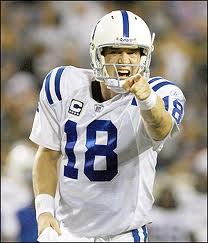
So I realize it’s Peyton and I walk over to talk with him a little bit because I had met him earlier in the day. I was visiting with the strength coach in the gym and Peyton introduced himself to me and told me to say hello to all the Eagles guys who were from Tennessee like Charlie Garner, Tommy Hutton, and Bubba Miller. So when I get over to where he’s working out in this corner of the gym I ask him what he’s doing up so late working out?
“Coach, I’ve got so many weaknesses that I’ve got to work on. There’s not enough time in the day. Tonight I’m working on my drop back,” he says. He was pretending the center was there and he was working on his footwork and foot quickness from the center to the drop point. I saw him later pulling a two-man sled. I don’t know what that was about. But I thought this guy has got to become famous someday because of his work ethic.
He’s working at 10:30 pm at night and nobody else is around. Peyton said to me that he had so many weaknesses to work on and his feet were one of them. He’d do drills at night by himself working on getting better. I left him there to go get my soda and go back upstairs to watch tape.
Waldman: I remember a guy whose story struck me in that vein of competitiveness and it was his teammate Austin Collie. When you look at him physically, he has strong acceleration off the line and great hands but not great top-end speed. But what stuck out to me were the stories that he would work out every night with B.Y.U. QB Max Hall after dinner.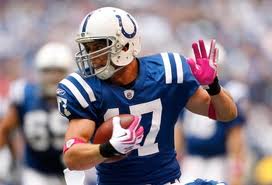
That work ethic was something I picked up on and when the Colts drafted Collie the first thing I thought was that Collie and Manning would be a perfect match as teammates because they both love to work on their own time.
Shonka: I’ll tell you what, I loved Austin Collie because he’s got great hands and rarely does he ever drop the ball. I gave him good grades for OurLads’. But you know what, I got hooked on those B.Y.U. players when I was with Philadelphia.
I signed tight end Chad Lewis and he made the Pro Bowl as an undrafted free agent. He was a little older – he was 25 – like a lot of the Eagles guys, but they are often more mature and I used to love visiting out there. Sasquatch Mountain is out there and it’s a beautiful place to go to school. Lavell Edwards was out there and he was always very honest with you about players.
I got to know Ty Detmer when he was at Philadelphia. There was another guy who was an example of when you talk about great anticipation. You’d be at practice during training camp and watch the guys and stand behind them and watch Ty throw and for a split-second think, Where the heck is Ty going with that…NICE THROW TY!
(Laughter)
His anticipation was just rare. Just like Warner. Just like Brady. They just have great anticipation to throw through windows that aren’t there but they are going to open up through film study.
Waldman: Another BYU guy I really liked and I think will be starting in this league in time is John Beck.
Shonka: Oh yeah, you know I gave Beck a second-round grade. You know, the only thing I think that Mike Shanahan his trying to do is get into the Andrew Luck sweepstakes. We know what Rex Grossman is.
He’s a backup who plays good in streaks and he’ll make mistakes and inopportune times. Of course he had the big injury history when he first got to the Bears, but we know what he is. But we don’t really know what Beck is. In fact, I think Shanahan said he liked him when he evaluated him in college.
Waldman: He did, but I don’t think Shanahan is necessarily trying to get into the Luck sweepstakes as much as he probably believes – and I’m obviously speculating – that if he starts Beck immediately then he’ll probably have to pull Beck earlier if Beck struggles. However if Grossman struggles, he can give Grossman the hook earlier and keep Beck in the lineup for a longer period of time without pressure to make another move since he already played the Grossman card.
Shonka: That could be. That’s a good point and you very well may be right about that. I liked Beck, too. I like those BYU players and I know you shouldn’t really put a label on players based on where they’re from. For example University of Texas offensive linemen are said to look the part, but don’t play well in the league. And Nebraska didn’t throw out a lot of pro offensive linemen for periods of time, either. They had some great ones, but…
So then you’re looking at other places like Iowa who kicks out linemen like it’s a factory. But BYU players – and I have the same feeling about Cal players – for some reason at least in my experience the Cal players would always play and be the starters. I don’t know if it was their smarts, because guys who go to Cal had to have the grades, I haven’t really analyzed it, but they produce.
As a scout you’re actually more of a profiler. My profiles say good things about those Cal players. But you’ll also find great players like Warner at I-AA or Fred Jackson at Division III, so I don’t think there’s any set guideline. Great football players can be found anywhere.
Tomorrow: Shonka shares some stories as a participant in various NFL war rooms leading to and during the draft.







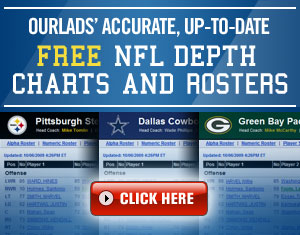
 Box 235 Hiawatha, IA 52233
Box 235 Hiawatha, IA 52233